NPS (or Net Promoter Score) is the cornerstone of customer satisfaction metrics. It measures a customer’s loyalty to your brand over time by gauging how likely they are to recommend your product or service to other people.
If your business relies on word of mouth and referrals to grow, or if customer retention is a goal of yours, NPS should be one of your key metrics.
Just ask Slack. According to their CMO, the team messaging app’s success is largely due to word of mouth, which they track using NPS.
To build a great NPS program, you have to focus on two major areas: How you measure NPS and what to do with it.
In this article, we’ll walk you through each step required to build a world-class NPS program.
1. Set goals and understand why you’re focusing on NPS
Before you set up your NPS program, you'll want to think about why you're doing it. There are three ways a great NPS program can make a big impact on your business:
1. Get a snapshot of how your customers feel, relative to your industry.
What constitutes a good NPS score? Given that NPS can range from -100 to +100, there’s a lot of gray area. There are some general rules, like a negative score is bad because it means you have more detractors than promoters. And if +100 is the max, anything above +50 could be considered very good.
However, scores vary by industry. To better understand your score, compare it against your competitors and industry-specific benchmarks. Below, you’ll find the average NPS for 23 U.S. industries. How do you stack up?
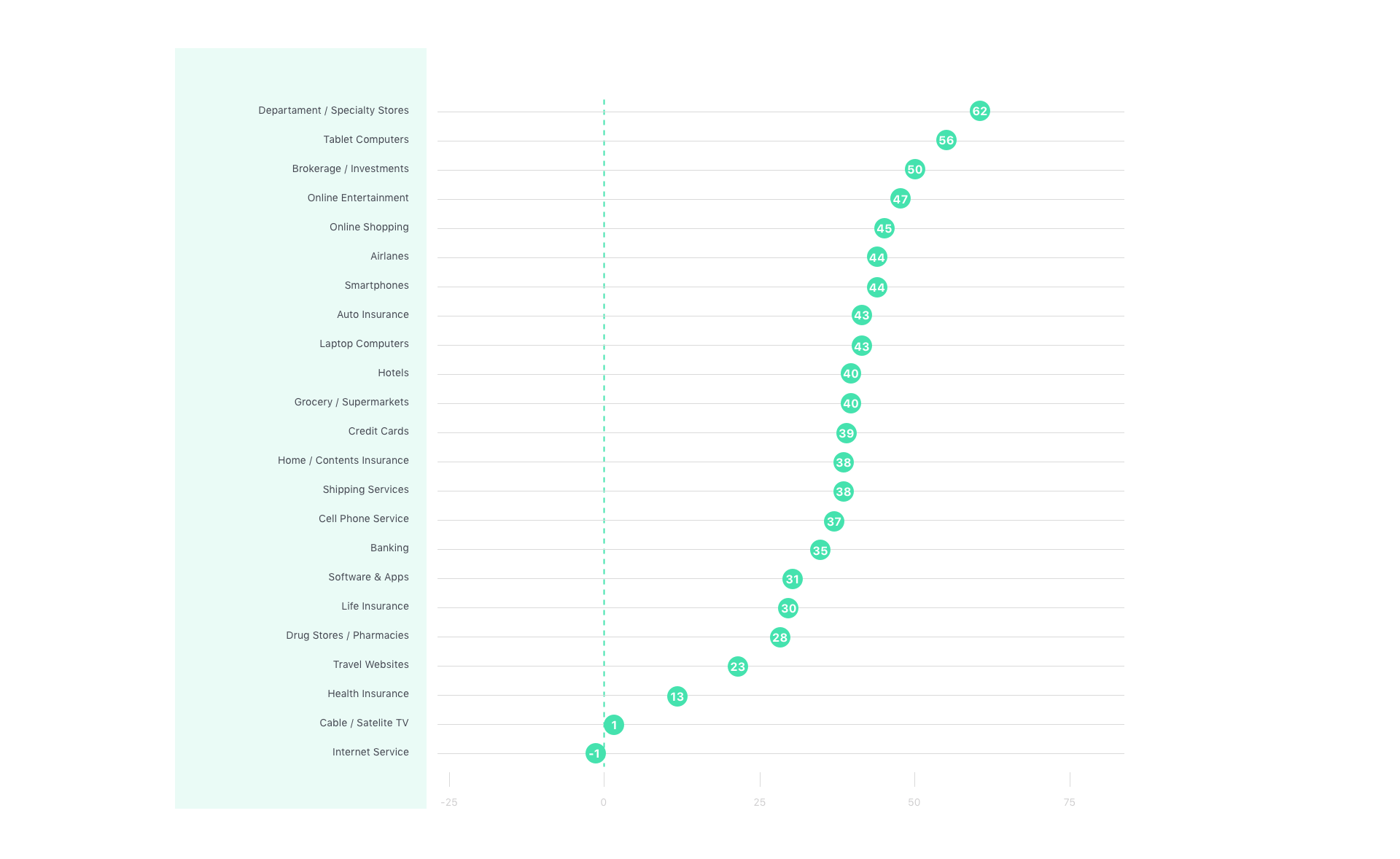
2. Capture a powerful data point and use it to take action
As you set goals for your NPS program, consider how you’ll use the data to improve your CX and convert more of your users into promoters. Here are a few examples:
Identify your biggest fans and turn them into brand evangelists
Your promoters are a huge asset, and it’s important to identify and mobilize them for your benefit. In their responses, you’ll discover why they love you so much. Use that momentum to drive reviews, build a referral or rewards program, populate a user community, and more.
Convert your passives into promoters
Your passives are largely neutral about you, and many companies make the mistake of ignoring them. Don’t. Instead, reach out to your passives directly, find out how you can delight them, and make adjustments. A small fix could bump their 7 or 8 rating to a 9 or 10.
Respond to detractors and learn how you can improve
Negative feedback is never fun, but it can be a treasure trove of helpful insights. When a customer gives you a bad rating, treat it as a learning opportunity. Look for patterns in their responses. Identify consistent pain points and resolve them.
3. See how your customers' opinions change over time
One of the major benefits of an NPS program is its ability to track change over time. As your product evolves and your customer base grows, you can continuously monitor how people feel about your company and product.
Make note of when you made big changes (product launch, acquisition, etc.), and see if your NPS increased, decreased, or stayed the same. You can even drill down to see how those changes played out in specific user groups
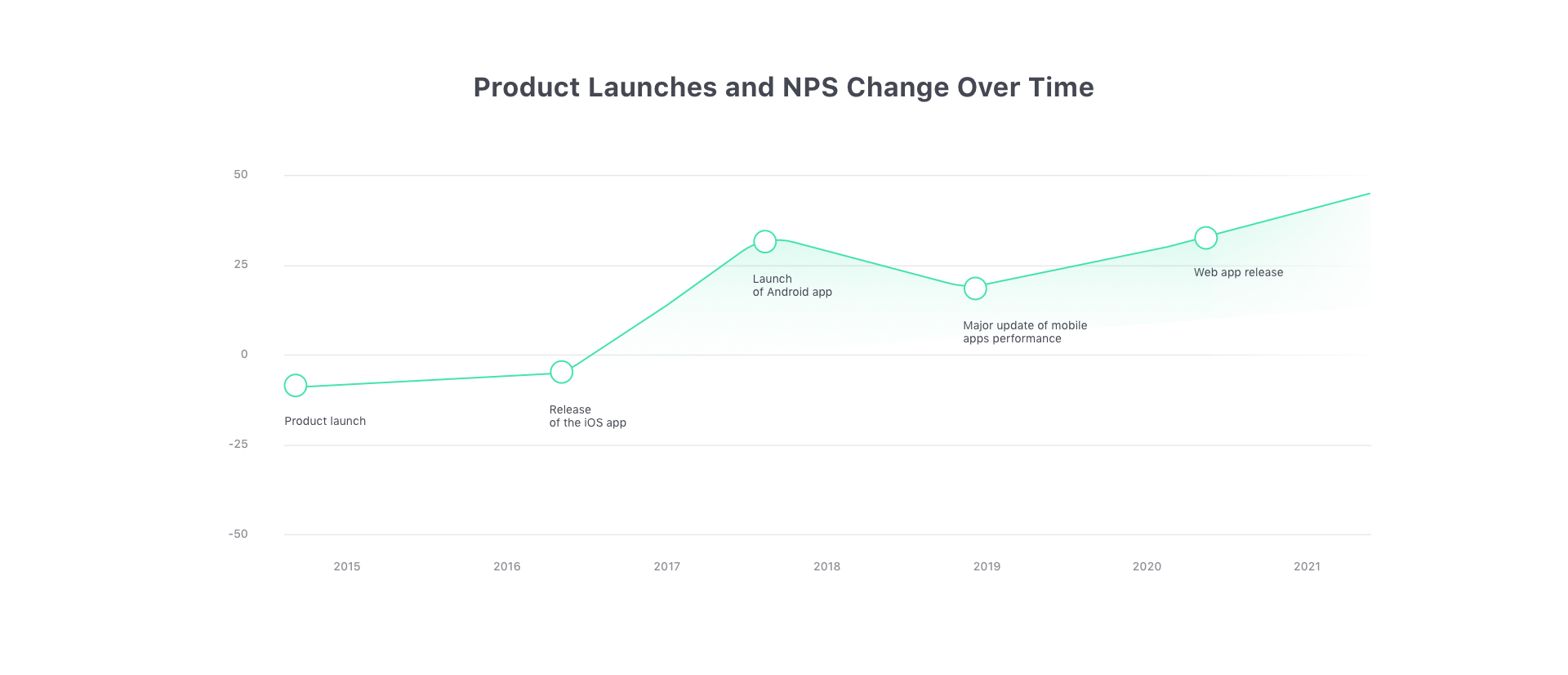
2. Decide who to survey (and how)
Before you send out your NPS survey, you’ll need to be strategic about who you send it to and when. You don’t want to bombard all of your users at the same time, or risk sending the survey to the same people too frequently. The survey will be most effective if you deploy it mindfully throughout a customers’ journey.
Choose your segments
Segmentation will help you detect patterns among your users and figure out which specific experiences you can improve. You can segment by experience level, usage, product, demographics, account manager, etc. Whatever will yield the most relevant data for your company.
Here are a few common examples:
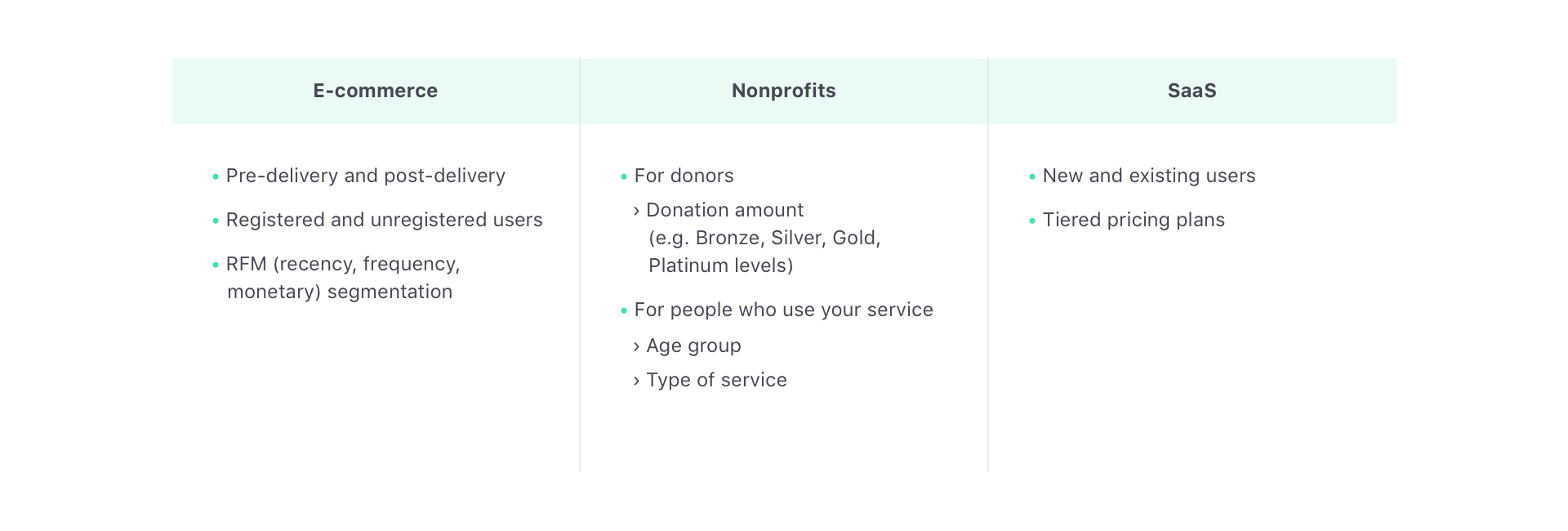
When and how often should you survey customers?
Timing is critical for NPS surveys. If you send them too early, your customers won’t have enough experience or context to offer helpful feedback. If you send them too late, the experience won’t be fresh anymore, and you’ll miss out on important details. And if you send NPS surveys too frequently, you’ll annoy your customers.
To get the best response rate (and quality responses), you first need to decide what kind of feedback you want: transactional or relational.
A transactional survey aims to measure a customer’s opinion on a specific transaction, e.g. placing an order or contacting support. To get the freshest feedback, you’ll want to send out an NPS survey soon after the transaction took place. For example, if a customer ordered clothing online from Patagonia, the company might send an NPS survey to that customer as soon as the order is delivered to get a feel for their opinion on the product.
A relational NPS survey is more general. It measures a customer’s overall relationship with your brand over time. Therefore, relational NPS surveys should be sent on a regular basis. And that schedule depends on a couple factors:
- How frequently are you updating your product?
- How much capacity does your team have to analyze and act on NPS responses?
If you update your product often and your team has capacity for analysis, you might survey customers once a quarter. If you update your product less frequently and/or have low capacity for analysis, maybe it’s every six months.
Frequency and timing also depends on company type. An NPS program at a B2B SaaS company will look different than an NPS program at a bank or an online retailer. Regardless, most companies send recurring NPS surveys at standard intervals (quarterly, semi-annually, annually, etc).
To do this effectively (and not overwhelm your customers or your team), survey each of your segments on a staggered, rolling basis. For example, you could survey a percentage of users in a segment every day to hit 100 percent over a period of time.
So let’s say you’re a subscription-based SaaS company, and you want to survey 5,000 users once a quarter. There are 12 weeks in a quarter, and you can send surveys five days a week for each of those 12 weeks, for a total of 60 days. Divide your number of users (5,000) by the number of surveyable days (60), and you get 83. Break your total number of users into groups of 83, and send each group an NPS survey once a quarter.
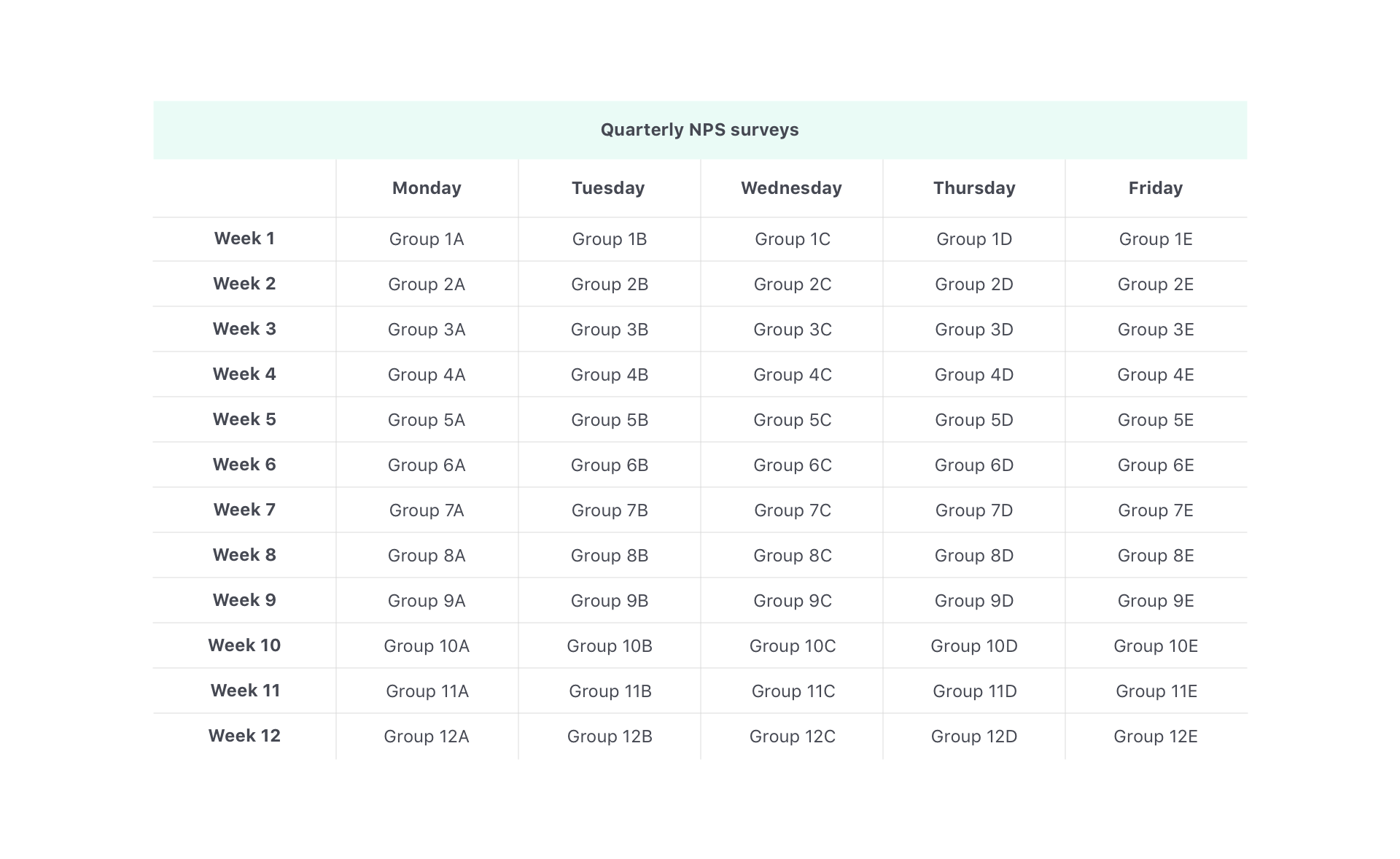
How should you survey them?
There are several ways to send out an NPS survey, including email and in-app. Each channel has its pros and cons regarding response rate, intrusiveness, biases, expense, etc.
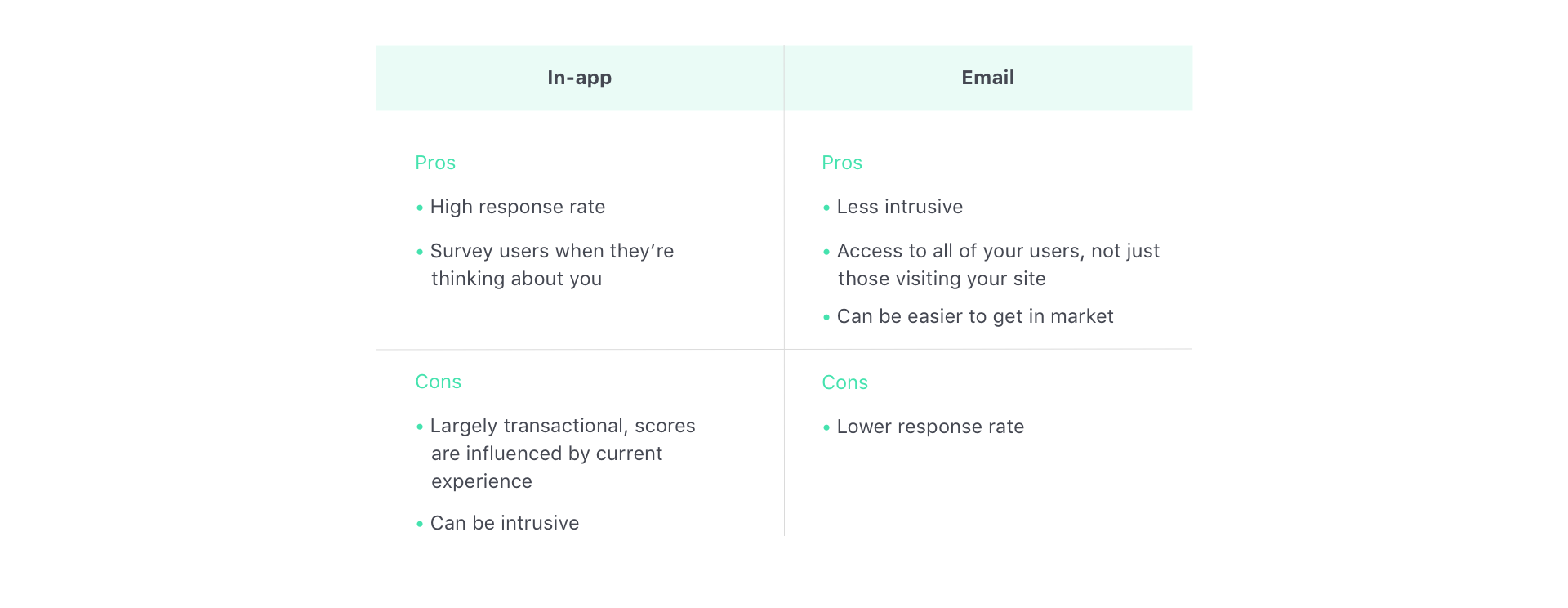
You should also consider how your customers use your product. For example, if they spend a lot of time in your app, use an in-app survey. If they don’t, send the survey via email.
That’s what scheduling app Calendly does. Knowing that most of their customers rarely visit Calendly.com, Calendly sends their NPS surveys by email. Choose the channels that make the most sense for your customers.
3. Choose an NPS tool
There are many NPS software options out there, so here is a helpful list of what to look for:
1. Easy to set up and maintain. A high-quality NPS tool doesn’t have to be complicated. Find one that will target the people you want, can easily be placed inside your app, and doesn’t require a huge time commitment from your tech team.
2. Filterable analytics. You want to understand your NPS results by segment, so you need an NPS platform that lets you filter by your user data.
3. Connects with other systems. Find an NPS platform that can easily pass survey data to your CRM, chat software, help desk software, email system, and other tools.
4. Integrates with your brand. Find a tool that lets you customize fonts, colors, and more - with no code.
5. Offers post-survey workflows. Build paths for customers based on their NPS, and tailor their experience as much as you'd like.
6. Qualitative feedback categorization. The qualitative section of your survey is where you get specific, detailed feedback. But those responses are time-consuming to go through. Look for an NPS tool that makes it easy to categorize these responses.
7. Supports multiple channels. As we mentioned earlier, there are many ways to deliver an NPS survey. Find a tool that lets you send surveys via email and in-app and allows you to track responses together and by channel.
4. Launch your survey and follow-up workflows
Set up your survey using the following standard NPS language. Feel free to adapt it to fit your brand and audience.
For transactional surveys: On a scale of 0-10, how likely are you to recommend [product/company] to family and friends based on [recent experience or purchase]?
For relational surveys: On a scale of 0-10, how likely are you to recommend [product/company] to family and friends?
As you get responses, group users into three categories:
Promoters (9-10): These customers love you and are absolutely willing to promote you to their friends and colleagues. The faster you can nudge them to do that, the better.
Passives (7-8): This group is mostly satisfied with your product or service. But a competitor could lure them away fairly easily based on price, features, customer service, availability, etc.
Detractors (0-6): This group is least satisfied with your product or service, more likely to leave, and more likely to give you a negative review (either online or to their friends).
For each bucket, you’ll want to follow up accordingly to make the most of your survey. We suggest you take actions right away, and follow up three days later. The faster you can close the loop, the more likely you are to drive results.
Immediately after the survey
1. Promoters. Ask your promoters to promote you right away. If you have a referral program, mention that immediately after someone gives you a 9 or 10. If you’re looking to drive reviews at a third party site, send people there. Don’t waste the momentum of a stellar rating.
2. Passives. Passives aren’t far from being promoters. If your team has capacity, consider offering passives an opportunity to schedule a call. Then you can talk to them about what they love and don’t love and help them get set up to be more successful. Sometimes, the personal touch alone will bump a passive up a point or two.
3. Detractors. Take this opportunity to learn more about why a detractor is unhappy. They’re clearly willing to give you feedback, so take advantage of that. Put together a five-question survey that starts immediately after they submit their NPS score, so you can dig deeper and get a feel for your most problematic areas.
Pro tip: If you use an interactive NPS tool, you can automate these follow-up actions by embedding them directly into your survey.
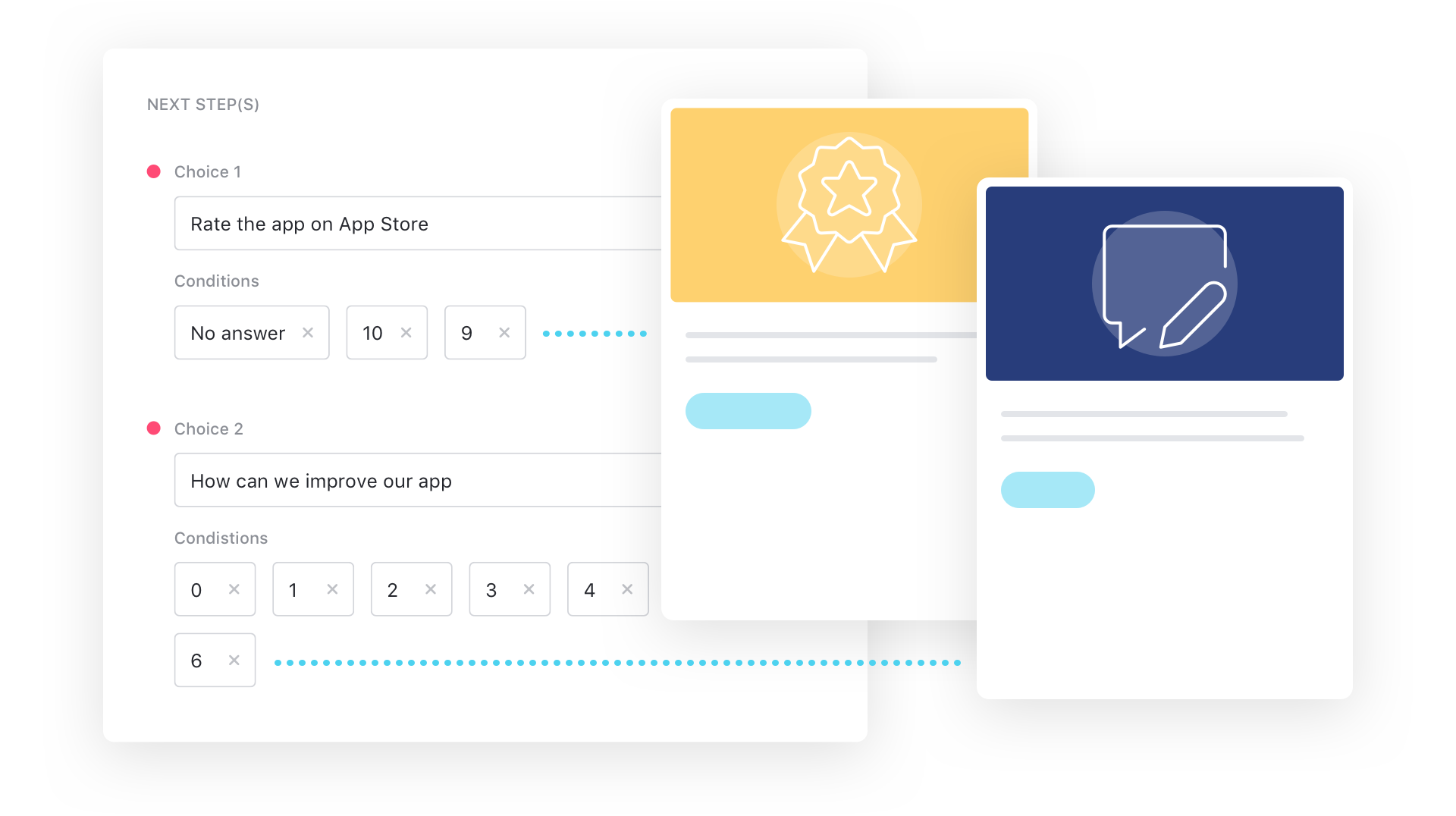
One week after the survey
As a common courtesy, you should contact every respondent and offer a token of appreciation, whether that’s a coupon code or a simple “thank you” message.
Any additional communication depends on how they rated you. For promoters, you may want to reiterate your earlier ask, or ask something else. For detractors, try sending links to relevant resources. If you asked follow-up questions, send resources that address their specific issues and pain points. It shows you care, and can help them get on track.
Either way, make sure you send something. Remember, your NPS program is a great opportunity to interact with some of your most vocal advocates and struggling customers.
5. Analyze your responses
There’s far more to NPS results than just the score itself. In fact, what makes NPS such a compelling metric is that it offers both quantitative and qualitative feedback. However, it can be an overwhelming task to sift through all those responses and pull out meaningful insights your team can act on.
In this section, we’ll give you some tips on how to analyze your NPS responses.
Quantitative
Your quantitative data is largely based on the main question: How likely are you to recommend our product to your family and friends? Your respondents will give you a rating, on a scale of 0-10 (with 10 being the best).
You can calculate your NPS score with the following formula:
NPS= % of promoters - % of detractors
Find your company’s overall NPS and then calculate your NPS by each of your key segments. Look for patterns and NPS trends over time by product, usage, location, customer segment, etc. Are there any notable spikes or dips? Is the timing related to a product launch or a change in customer service processes? What actions can you take to improve?
By segmenting your quantitative responses, you can find those specific insights that would otherwise get lost in the averages.
Qualitative
The open-ended questions in your NPS surveys are often a goldmine of useful information. This is where customers can tell you, in their own words, why they gave you the score they did.
However, qualitative analysis is challenging and time-consuming. Your team will need to review responses, categorize them based on what the customer says impacted their choice, and analyze them for patterns.
If you’re lucky, your NPS tool can help you bucket responses by asking a follow-up question.
Here are a few things to look for in your qualitative analysis:
- How do your promoters talk about you? What words or phrases do they use to describe your brand and product? Use that language in your marketing copy to make it more relatable and effective.
- Are there small issues you can fix? If you’re in e-commerce, check the qualitative responses from your detractors. Are there any small issues you can fix in your sales, payment, and order fulfillment processes?
- Is your website and marketing copy repeated by customers? If customers are using the specific language you wrote, that’s a signal that your message is working.
6. Share the results with your company
While metrics like CSAT and CES are geared toward your support team, NPS represents your entire company. Everyone, from product to support to executives, plays a role in how a customer feels about your brand. That’s why it’s important to regularly share NPS survey results with your company.
And not just the overall score, with no context. Instead, use a chart to show changes over time. Share the real-time comments from customers. Report on trends and patterns from the qualitative feedback. If a new product or feature was recently launched, share a few takeaways from your customers’ responses to those changes.
Customer happiness matters. By sharing NPS results, you can rally your team and encourage a company-wide culture that focuses on customers.
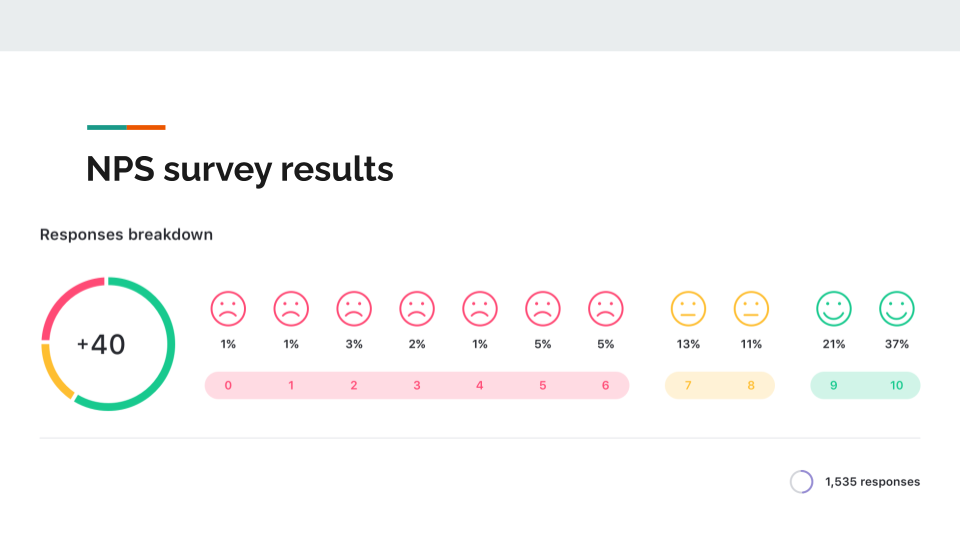
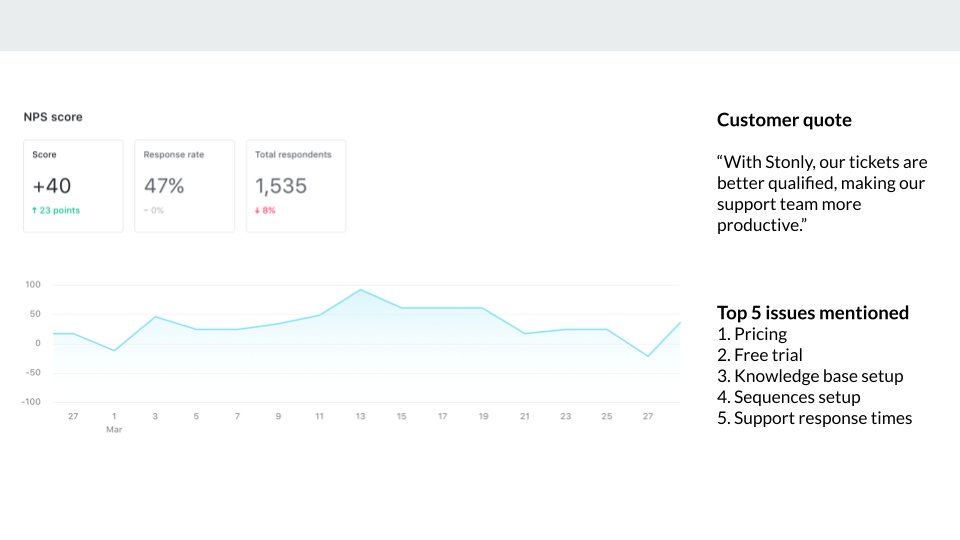
Set up your NPS survey today
Sign up for a free trial of Stonly or schedule a call to set up your first interactive NPS survey. Discover the difference between a static NPS program and an actionable one.

![What is an NPS Program & How to Build One? [Detailed Guide]](/blog/content/images/2021/01/How-to-Build-an-Actionable-NPS-Program---blog_header--1-.jpg)